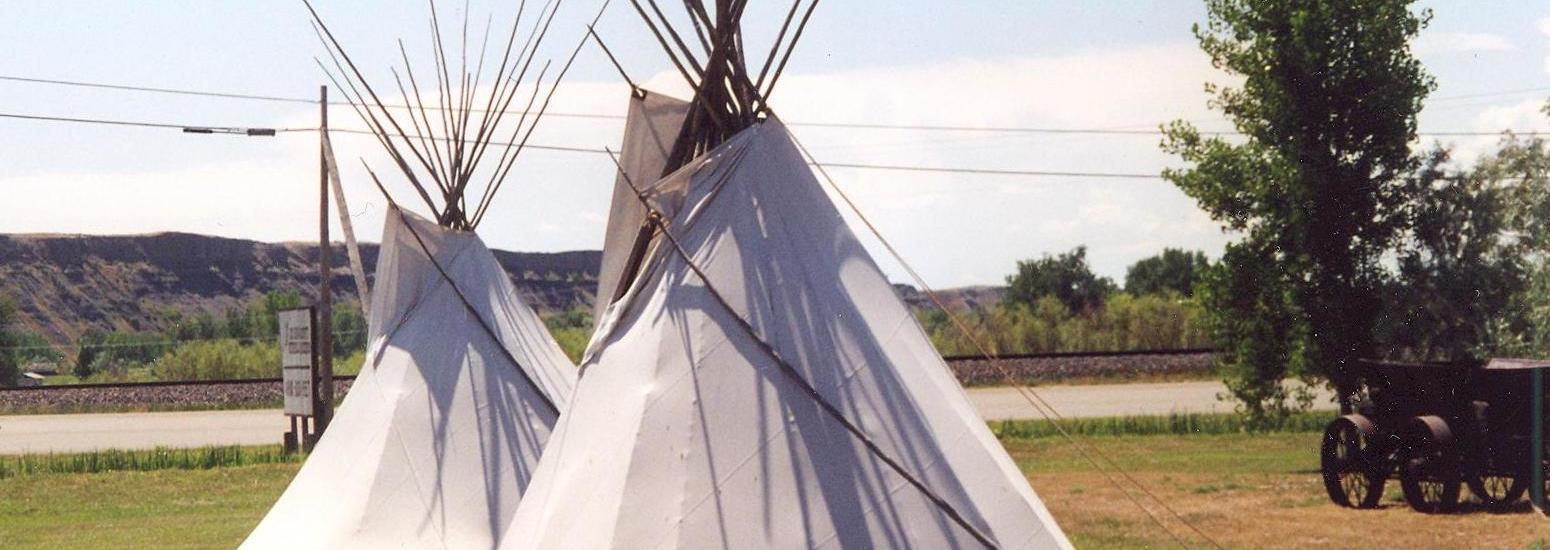
History of the Crow Tepee as documented by Henry Old Coyote
The tepee holds significant meaning to the Crow “Apsaalooke” people. “A tepee is your second mother. Your first mother is the Earth, upon which the tepee rests.”
The number of poles may vary from 18 to 23 depending on the size of the tepee. The poles, known as Lodgepole Pines, are usually harvested from the Big Horn Mountains.
The center pole represents the owner of the lodge and is often called the “Chief Pole”. It is the place of honor. Only the chief or a man of very high standing sits next to the center pole. The four basic outer poles are the ones that represent the four cardinal directions: north, south, east and west. The other poles around the perimeter are numbered and each represents something of importance in the life of the owner. The number one pole stands for the number one thing in his life. It could be buffalo, horses, birds, air, water, the sun, a certain plant or whatever is important to the man. The two outer poles are used to move the smoke flaps. The one on the south side represents the coyote and the one on the north side represents the owl. According to the religious history of the Apsaalooke, they are sentries that watch the home and ward off evil. The two door poles represent the mountain lion and the grizzly bear, protectors of the home.
In the early days, the people did not have pegs to hold the tepee tight to the ground. They weighted the edges of the lodges with stones until a young man on a vision quest was given the idea for using stakes. Each individual has his own type of stake. Different woods are used and may be carved, painted or notched in a distinctive fashion.
The type or style of lining in the tepee is passed on from one person to another or it may be a matter of individual taste.
Canvas has replaced the historical cover which was made of eighteen to twenty buffalo hides.
